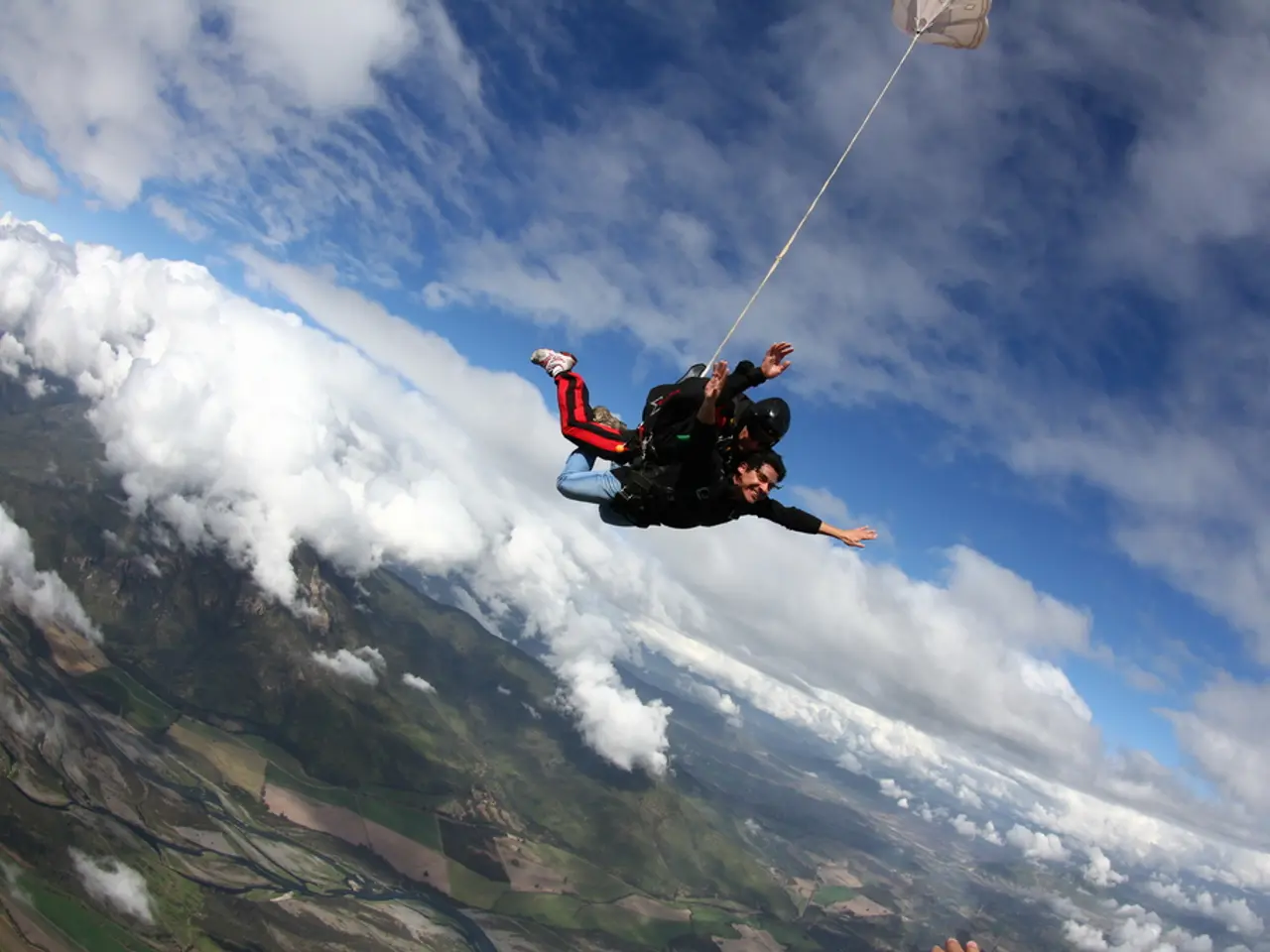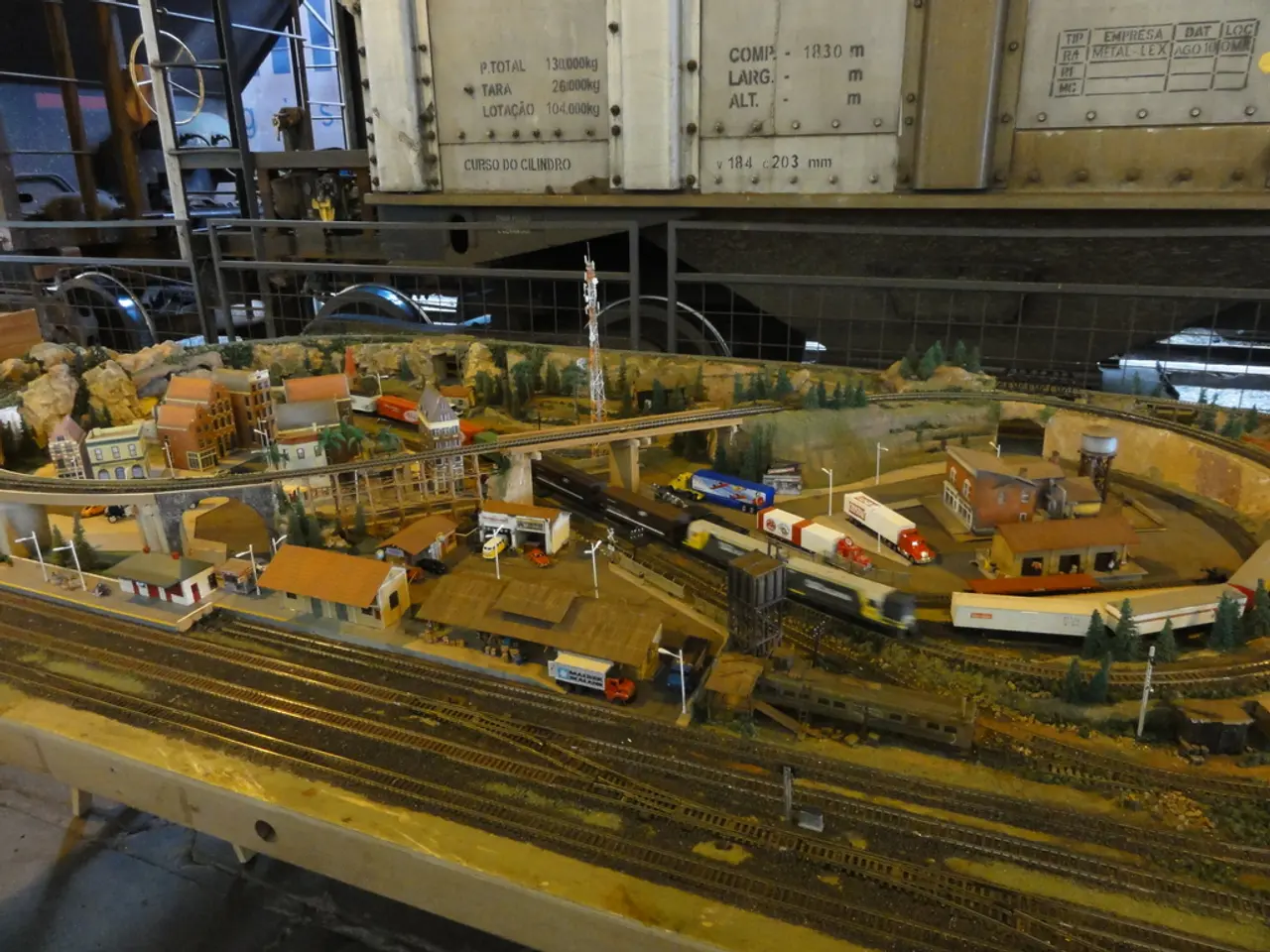Annual Parachutist Exercise in Langenargen: Focus on New Model EPC and Side Door Exits
Parachutists descend dramatically into Lake Constance.
This year's annual parachutist exercise in Langenargen was marked by the integration of advanced equipment and procedures, with a particular focus on the new model EPC (Exit Preparation Container) and side door exits. Over four days, around 300 parachutists from various German associations gathered in Langenargen to participate in the exercise, accommodated there during the event days.
The New Model EPC: Enhancing Airborne Operations
The EPC is a specialized container used to prepare and manage parachutists during aircraft boarding and exit phases. The new model boasts several improvements, including an enhanced structural design for better stability and easier handling, improved fastening systems inside the aircraft, modular compartments for different parachute models and equipment, and integrated communication and signaling systems. These updates aim to speed up loading and exit procedures, increase safety, and facilitate quicker and more efficient repacking between jumps in multi-pass exercises.
Side Door Exits: Simulating Real Deployment Scenarios
Side door exits, commonly used in Langenargen exercises, simulate real deployment scenarios, especially for tactical or precision jumps. The new EPC model supports side door exit configurations better than older containers by fitting securely without obstructing the doorway. Jumpmaster training is crucial for managing timing, jump sequence, and spacing when utilizing side door exits. Reinforced signaling protocols, pre-jump briefings, and equipment checks ensure the safety of parachutists when exiting from the side of the aircraft.
Hot Load Scenarios: Realistic Training under Operational Pressures
"Hot load" scenarios simulate the rapid loading of personnel and equipment onto an aircraft under operational pressure, often with engines running and minimal ground time to reduce exposure. The exercise included simulated hot load scenarios to test the efficiency of the new EPC system and side door exit procedures under stress. The focus was on quick, orderly loading while maintaining safety and communication. The challenges addressed included coordination to avoid congestion in the boarding area, risk management around aircraft noise, jet blasts, and rotor wash if helicopters are involved, and time-efficient verification of parachutist gear and readiness.
Summary
The annual parachutist exercise in Langenargen this year successfully integrated the new model EPC, enhancing the logistics and safety of airborne operations. Side door exits were effectively managed with updated procedures, and hot load scenarios provided realistic training to ensure readiness under operational pressures. The exercise was a testament to the efficiency and safety of the new EPC system and side door exit procedures in a variety of scenarios.
The parachutists were instructed to apply the new model EPC during the aircraft boarding process, as it offers improved functionality and increased safety. Participants also practiced sports-like maneuvers while exiting side doors, which mimic real-life deployment scenarios and require precise timing and coordination.







